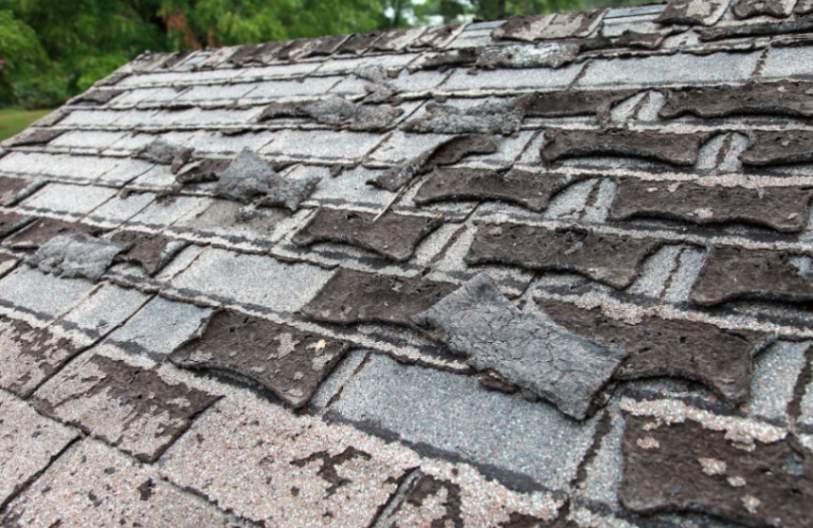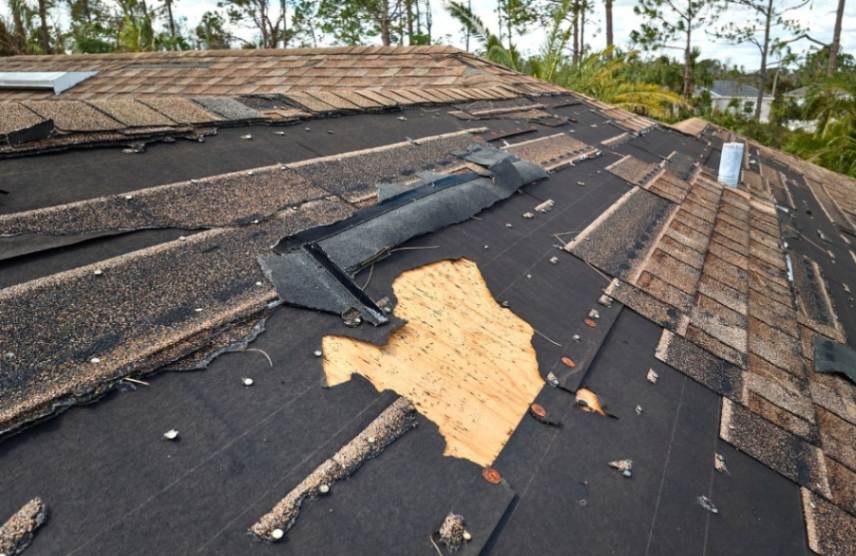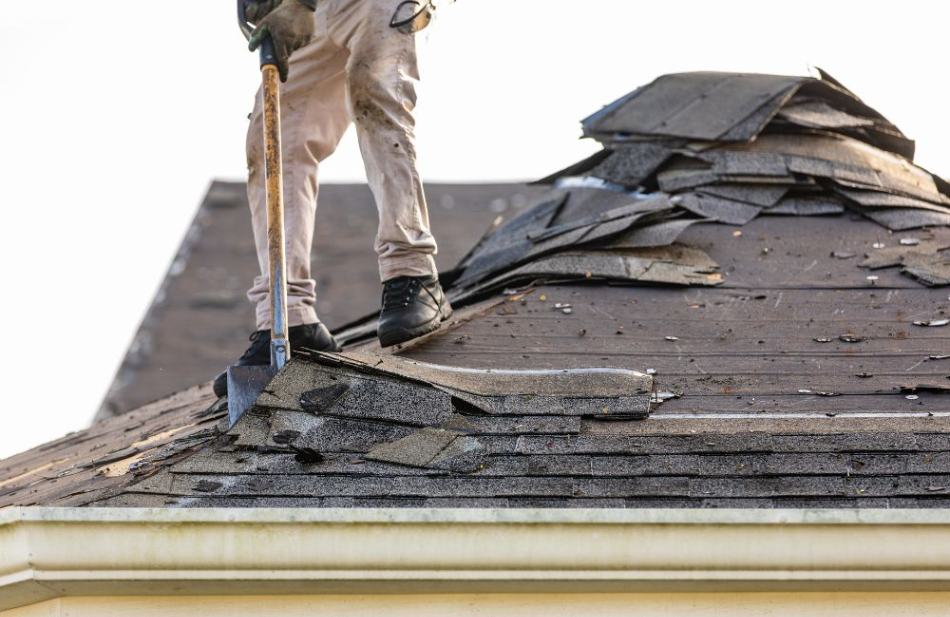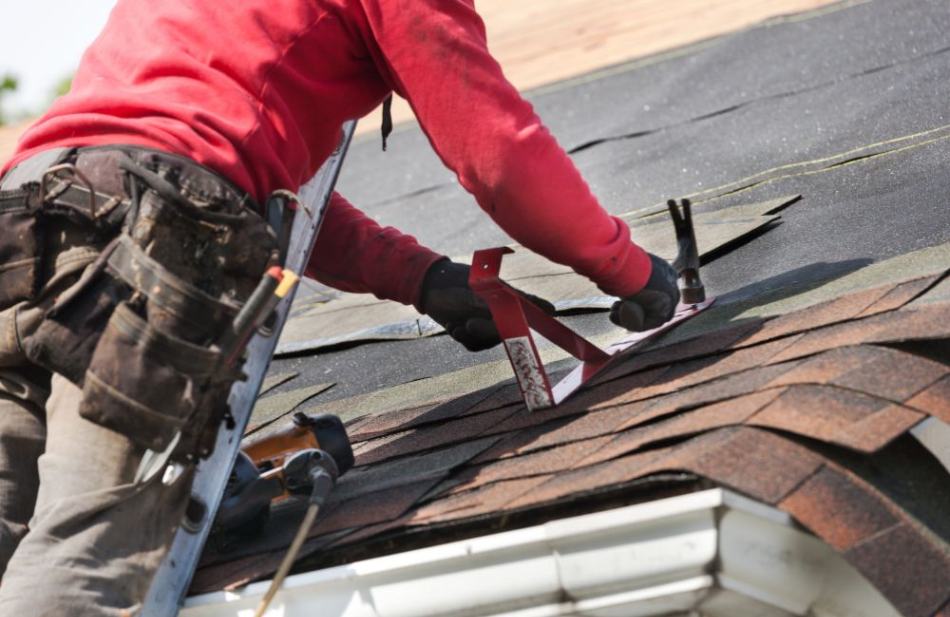- Free Estimates

Storms can strike with little warning, leaving homes exposed to the elements and vulnerable to extensive damage. High winds, heavy rain, hail, and flying debris can all wreak havoc on a roof, compromising its structure and leading to costly repairs if not addressed promptly. For homeowners, knowing what steps to take after such an event can significantly reduce the impact.
Here’s a clear, actionable approach to storm damage roof repair, ensuring safety, efficiency, and long-term protection.
✔ Inspect the roof safely from the ground using binoculars or a zoom lens
✔ Prioritize safety—never climb on a damaged roof or enter hazardous areas
✔ Document all damage with clear photos, videos, and written notes
✔ Make temporary repairs like tarping and leak control to limit further damage
✔ Hire a licensed roofing contractor with emergency repair experience
✔ File your insurance claim promptly, backed by complete documentation
✔ Schedule professional repairs with a written contract and durable materials
✔ Reduce future risk with regular maintenance and storm-resistant upgrades
The number of severe hailstorms in the United States has surged in recent years, making roof damage an increasingly common and costly problem for homeowners. According to a study, severe hail events rose by 21% between 2022 and 2024, and the growing size of hailstones is driving up insurance rates in the hardest-hit states. In 2020 alone, the U.S. experienced 4,611 major hailstorms, underscoring the rising frequency and intensity of these weather events.
The first—and most crucial—step after a storm is to evaluate your roof for damage safely and from a distance. A compromised roof may be unstable, and attempting to climb onto it can result in serious injury or exacerbate the damage. Instead, conduct a visual inspection from the ground to identify obvious issues and begin documenting the extent of the destruction.
While urgency is understandable after a storm, personal safety should always come before property. Taking unnecessary risks can lead to serious injury, especially with an unstable roof. If the situation feels unsafe at any point, call a professional immediately. Some roof storm damage restoration companies offer 24/7 emergency assessments and can quickly stabilize the situation.

Accurate and timely documentation supports both insurance claims and contractor estimates. It also ensures you won’t miss any areas needing repair during the roof storm damage restoration process.
Complete this documentation before moving debris or attempting temporary repairs. Adjusters may not accept claims if they can’t verify the original damage. A well-documented case strengthens your position during claims and accelerates approval for storm damage roof repair.
After ensuring the area is safe and documenting all visible damage, homeowners should take immediate steps to prevent additional deterioration. Temporary repairs help minimize risks while waiting for professional storm damage roof repair. They don’t fix the root issue, but they do provide critical protection while professional roof storm damage restoration is scheduled. They help prevent mold, insulation damage and compromised roofing structures from worsening.
Once temporary fixes are in place, homeowners should contact a qualified professional immediately. A licensed contractor ensures the emergency roof repair is done safely, thoroughly, and in compliance with local codes. A reliable contractor is essential for high-quality roof leak repair after storm incidents and can prevent problems from resurfacing in the future.
Filing an insurance claim promptly is essential for getting coverage for emergency roof repair costs. Most policies cover wind, hail, and other storm-related damage, but claim approval depends heavily on how the process is handled.
Never authorize full repairs until the claim is approved and you understand your policy coverage. Insurance providers may deny coverage for non-covered services or work completed before their inspection. By following these steps, homeowners can ensure their roof storm damage restoration is financially supported and completed without unnecessary obstacles.

With the insurance claim approved and the funding secured, it’s time to move forward with the actual repairs or full roof replacement. This stage is critical to restoring the roof’s functionality and ensuring the home is protected against future weather events. By finalizing repairs properly and choosing durable materials, homeowners protect their investment and enhance long-term safety. This final step in emergency roof repair closes the loop on storm recovery and brings peace of mind.
While homeowners can’t prevent storms, they can reduce the risk of costly damage through preparation, maintenance, and roof upgrades. In 2024, Texas and Kansas reported the highest number of hail events, with 878 and 495 incidents, respectively, indicating regional vulnerabilities to such weather phenomena. Taking preventive action now supports long-term success in future storm damage roof repair situations. Proactive prevention reduces the likelihood and severity of future roof leak repairs after storm incidents. It also extends the life of the roof and minimizes long-term costs related to roof storm damage restoration.
Coverage depends on the cause of the damage. Most homeowner insurance policies cover sudden events like wind, hail, or fallen debris. Damage from neglect, poor maintenance, or aging materials is usually not covered.
Avoid making permanent repairs before your insurance adjuster inspects the damage. Do not throw away any damaged materials, as they may be needed as evidence for your claim. Also, avoid hiring contractors who lack licenses or insurance.
In most cases, it’s safe to remain in the home during minor repairs. However, if there are active leaks, exposed electrical systems, or structural concerns, temporary relocation may be recommended. Always consult your contractor for safety advice.
Minor repairs can often be completed in a single day. Larger projects or full replacements may take several days to a week, depending on roof size, material availability, and weather conditions. Permits or insurance delays can also affect the timeline.
Yes, postponing repairs can lead to further water intrusion, mold growth, and even structural damage. These secondary issues are often not covered by insurance. Prompt action helps keep costs manageable and damage contained.

If your roof has been damaged by a storm, don’t wait until small issues turn into costly repairs. Roofer of Wappingers Falls LLC provides trusted, timely, and professional storm damage roof repair and emergency roof repair services for homeowners in Wappingers Falls, NY. With expert crews ready to respond, we help you restore your home quickly and safely.
Beyond storm-related repairs, Roofer of Wappingers Falls LLC also offers a full range of roofing solutions, including roof installation, roof replacement, shingle roofing, flat roofing, metal roofing, skylight repair, and gutter installation. Whether you’re dealing with a roof leak repair after a storm or planning an upgrade to more resilient materials, our team is here to help. Residents of Wappingers Falls, NY trust our licensed and insured professionals for high-quality work and unmatched service.
For dependable wind damage roof repair, thorough roof storm damage restoration, or new roof construction, choose the local experts who know your needs. Contact Roofer of Wappingers Falls LLC in Wappingers Falls, NY today and get your free estimate!